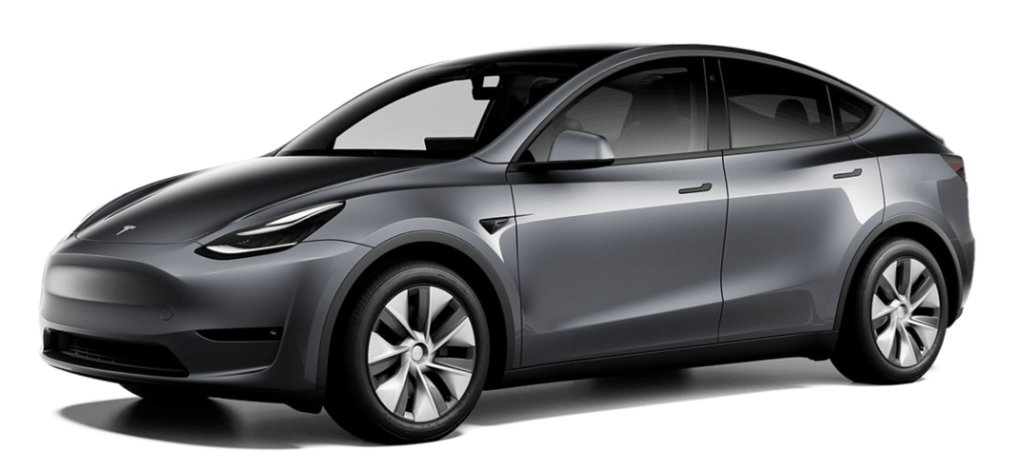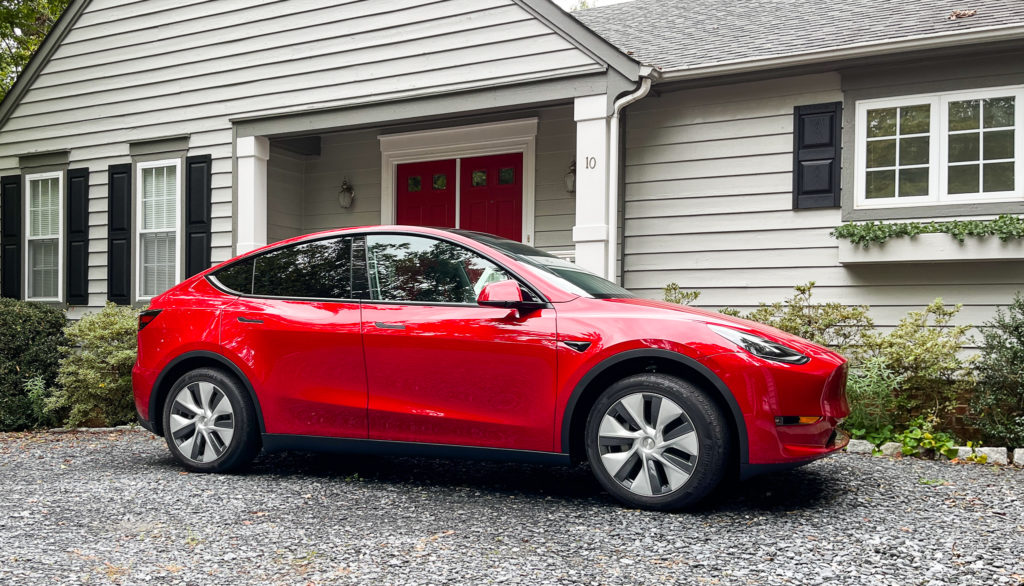I’m an electric vehicle enthusiast. Today some website advertised Volvo all-electric vehicles, and I thought I would compare their XC40 Recharge offering with a Tesla Model Y. Both are hatchbacks. I want to see how they stack up.
Tesla no longer offers a single-motor Model Y and Volvo’s single-motor version of the XC40 Recharge starts with the 2024 model year. So we’re comparing dual motor versions for both.

The Bottom Line
When one thinks of an electric vehicle, the two things that seem to come up first are price and range. According to this Volvo company page, the XC40 Recharge has a starting MSRP of $53,550 (in another place it’s $54,645) and an EPA range of 223 miles. Just for fun, I clicked on their inventory link and found that the nearest Volvo dealer didn’t have any in stock, but one in Midlothian, Virginia, did (and that’s fairly close to where my nearest Tesla store is) and they had the Core model for $56,440. The Volvo comes in 3 trim levels: Core ($54,645), Plus ($57,345) and Ultimate ($60,595). The upper trim levels offer various features like a moon roof, 360° camera, adaptive cruise control and a premium audio system.
A Tesla Model Y starts at $47,740. I don’t use the term MSRP because Teslas don’t have suggested prices; they have prices. You order the car online and that’s what it costs. One can sometimes get a little off on what Tesla calls an “inventory car,” but there are not many of those; most Teslas are shipped directly to the customer delivery point from the factory. Teslas have an added advantage this year because they qualify for a $7,500 federal tax credit. Volvo cars don’t because they are foreign made, so the Tesla this year in the USA is considerably less expensive. EPA range for the Model Y is 279 miles. (There is a Long Range variant of the Model Y with 330 miles of range for $2750 more.)
Details
Performance? Volvo gives the 0-60 time of a brisk 4.7 seconds. Tesla is a little slower at 5.0 (the Long Range variant is 4.8). Volvo doesn’t give a top speed on its Learn More page; the Tesla’s is 135 mph. I have read that Volo in general limits all its cars to a top speed of 112 mph because of safety concerns.
Both cars have a central touch screen for controls. Here are photos:


I suppose one notices immediately that the Tesla screen is bigger (15″) and the overall layout of the controls much simpler. Which one prefers is a matter of taste.
Specifications
Now for the tedious part, the specifications in tabular form
| Volvo XC-40 | Tesla Model Y | |
|---|---|---|
| Range | 223 miles | 279 miles |
| Motor | Dual | Dual |
| Height | 65″ | 64″ |
| Width excluding mirrors | 75.2″ | 75.6″ |
| Length | 174.8″ | 187″ |
| Seating | 5 | 5 (optional 7) |
| Space behind rear seats | 16 cu. ft. | 30.2 cu. ft. |
| Space behind rear front seats, rear seats folded | 57.5 cu. ft. | 72.1 cu. ft. |
| Front Trunk | Unspecified | 4.1 cu. ft. |
| Headroom front | 37.6″ | 41″ |
| Headroom rear | 38.3″ | 39.4″ |
| App | Volvo Cars | Tesla |
| LED matrix headlights | Yes | Yes |
| Adaptive Cruise Control | Not in base model | Yes |
| 360° parking view | Not in base model | Partial |
| Power lift gate | Yes | Yes |
| Fog lights | Not in base model | Yes |
| Alarm | Yes | Yes + video |
| HomeLink | Not in base model | $350 |
| Tire repair kit | Yes | $70 |
| Home charging cable | Yes | $230 |
| Apple Car Play | Yes | Functions built in |
| Google Play Store apps | Yes | Functions built in |
| Autosteer | No (warning only) | Yes |
Conclusion
Volvo XC40: Meh.
Tesla Model Y: Bought the Long Range one.



I enjoyed the review. Have you seen this Ted Talk on EV’s? He thinks hybrids have a lower life cycle carbon footprint than EV’s.
https://youtu.be/S1E8SQde5rk?si=zaCNn3TQDaurPzgo
This video is 3 years old so I do not know if his data is still valid.
RC, I ran across this TEDx (x indicates it’s a regional talk) from San Antonio, Texas, over a year ago. Regional talks are loosely governed, as I found out years ago when I got some promotional material for a TED event that was going to be in Greenville, SC.
The data that the presenter gave wasn’t valid three years ago. What he did was to make a simplistic case for the EV and then critique it by expanding the domain of what energy is included in the footprint of an electric vehicle, but the slight of hand was that he didn’t expand the domain for a fossil fueled vehicle by adding significant petroleum refining and transportation costs.
The other misrepresentation is his graphs projecting into the future, making the false assumption that there will be no change in the amount of renewable energy powering the electric grid — when in fact that number has been increasing year over year for a long time and there’s every reason to assume it will continue.
I left this comment on that video a year ago:
I don’t want to play the conspiracy theorist without a solid case, but the guy obviously put a finger on the scale, and the video came from a major petroleum producing state. And I would just wonder why the US Government is subsidizing EVs if hybrids were actually better. I think hybrids are great and they do reduce greenhouse gas emissions, but not as much as a totally electric vehicle.
The Union of Concerned Scientists did a far more through study, and a follow up study. It says the EV is better.
https://blog.ucsusa.org/dave-reichmuth/are-electric-vehicles-really-better-for-the-climate-yes-heres-why/
https://blog.ucsusa.org/dave-reichmuth/new-data-show-electric-vehicles-continue-to-get-cleaner